The scoop on ice cream
What does ice cream have in common with papermaking, printing, compasses and gunpowder? I’ll wait. Stumped? The answer is that all of these were (purportedly) first invented by the ancient Chinese. Although only the latter four were considered noteworthy enough to earn a spot among the distinguished 四大发明 (Four Great Inventions) of Ancient China, many would argue that ice cream was a pretty worthy invention, too. But for all you ice cream fans out there, don’t worry: It took several thousand years, but this favorite of frozen desserts finally got the recognition it so deserved in 1984, when President Ronald Reagan declared the third Sunday of July National Ice Cream Day. (For good measure, he also designated the entire month of July as National Ice Cream Month).
To help you properly celebrate this most joyous of days (made even better by the fact that many places offer free ice cream), let’s take a look at the science of ice cream — plus its lively bunch of cousins that have come to populate the frozen dessert landscape, ever-expanding to fit a variety of dietary needs and preferences.
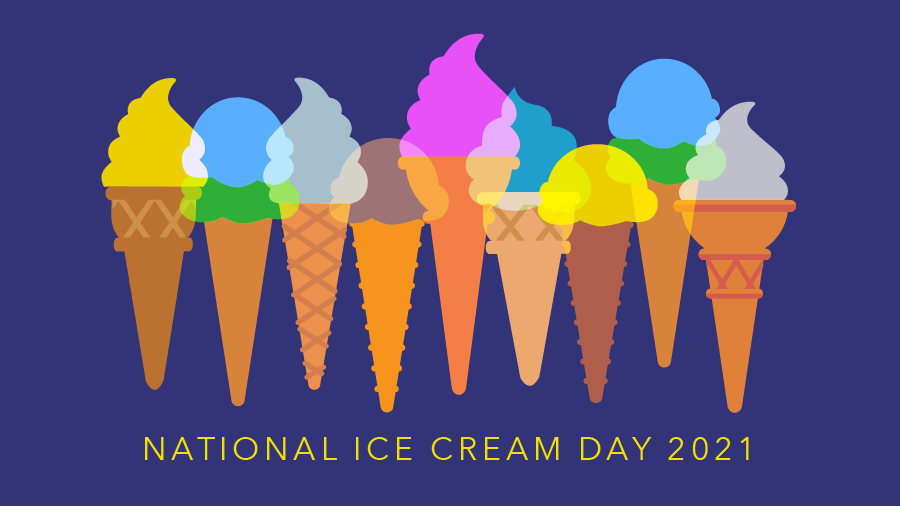
The very first frozen desserts — allegedly enjoyed by the likes of the Roman emperor Nero — were likely made from snow mixed with flavorings such as fruit and honey. The innovation of the ancient Chinese was supposedly the addition of milk to the mix: According to some sources, the ancient Chinese were mixing rice and milk and burying the concoction in snow to chill as far back as 200 B.C. The veracity of this account is murky, but one Chinese word for ice cream — 雪糕 — lends it some support: The word translates literally as “snow cake” (although Mandarin speakers in mainland China more frequently use the oddly hybrid loanword 冰淇淋, wherein 冰 is a direct translation of “ice” and 淇淋 is a transliteration of “cream”).
Later on, the ancient Chinese may also have been the first to come up with the concept of an ice cream machine: They filled pots with a base mixture of milk, flour and flavorings and then surrounded the pots with salted snow, taking advantage of the freezing point depression that occurs when salt (or another solute) is added to ice to achieve low enough temperatures to freeze the mixture inside the pots (the classic “make ice cream in a bag” experiment enjoyed by countless young scientists in modern times relies on the exact same phenomenon, as does the reasoning behind salting the roads during cold winter months).
With lots of experimentation, plus a scientific discovery here and there and several key technological developments — including refrigeration technology — these ancient ice cream ancestors have evolved into the creamy, cold product people all over the world enjoy today. Or rather, products — from hard ice cream to soft serve, frozen yogurt to gelato, and sherbet to sorbet, choices abound for those looking to indulge in a tasty frozen treat. But what exactly makes ice cream — as we know it — ice cream, and how do all these other options compare?

Delicious chemistry
In addition to flavorings and other add-ins, most commercial ice creams contain six main ingredients: milk, cream, sugar, air, emulsifiers and stabilizers. Each plays a vital role in determining the structure and texture of the final product. Chemically speaking, ice cream is an emulsion of fat droplets dispersed in water. The fat droplets, mostly in the form of triglycerides, come from the cream. Proteins from the milk — whey and casein — coat the fat droplets to prevent them from coalescing and separating out from the water in the liquid base mixture prior to freezing. Sugar — like salt — lowers the freezing point of the mixture, preventing the mixture from freezing into a solid chunk of ice (instead, it exists as a semisolid mixture of ice and liquid — perfect for scooping). Freezing point depression is also the reason that ribbons of caramel (which generally contain a very high percentage of sugar) tend to stay softer than the ice cream milieu they weave through in some flavors.
Milk, cream, sugar — that all sounds well and good, but what’s this stuff about air? Although you won’t find it in the list of ingredients, air is actually a vital component of ice cream: it helps make it soft and gives it a light and fluffy texture (it also means that ice cream can be classified as a foam). Air is incorporated during the churning process, and the amount of air contained in the ice cream — called overrun — is measured as the percent by which the mixture expands from the incorporation of air. For example, if 1 liter of mixture yields 1.2 liters of ice cream after churning, the overrun is 20%. Faster and longer churning yields higher overrun. Because air, unlike the other ice cream ingredients, is free, cheaper commercial ice creams generally have a higher overrun — as much as 100%. This gives them a lighter, fluffier texture than more expensive ice creams, which tend to be thicker and creamier.
But after incorporation, the air bubbles need a bit of help to stay put and to stay small. That’s where the final two ingredients, emulsifiers and stabilizers, come in. Emulsifiers get their name from their ability to stabilize emulsions by supporting the dispersion of a nonpolar component like fat in a polar component like water. This is thanks to their molecular structure: they’re soluble in fat on one end and in water on the other. We’ve already covered how milk proteins act as emulsifiers in ice cream: they cover the fat droplets from the cream to allow for their dispersion in the water component of the milk. However, these milk proteins actually emulsify a little too well, resulting in fat droplets too dispersed to do a critical job: trapping air bubbles. Another emulsifier — for example, lecithin, which is found in egg yolks — is thus added to replace some of the milk proteins and, paradoxically, allow the fat droplets to coalesce enough to secure air bubbles in place (catch a close-up glimpse of the action in these microscope images). Stabilizers — examples of which include gelatin, guar gum (and other gums like locust bean and xanthan), and carrageenan (a seaweed derivative) — lend the emulsifiers a hand in their task of promoting air bubble retention by increasing the viscosity of the base mixture, making it harder for air bubbles to move around and coalesce or escape. Stabilizers also bring a host of other benefits to the ice cream-making process, including reducing ice crystal growth, slowing melting, and improving texture.
Ice cream and company
Now, for a product to qualify as “ice cream,” it’s not sufficient for it to simply contain these seven ingredients mixed together in a semi-frozen format. According to the FDA, it must also meet the criteria of having at least 10% milk fat and no more than 100% overrun. Typical ice cream contains more cream than milk, giving it a milk fat content of 10-20% (for comparison, whole milk has 3.25% milk fat, while heavy cream has at least 36%). Meanwhile, overrun ranges from 20% for more expensive offerings to the maximum allowable overrun of 100% for bargain desserts. To arrive at some of ice cream’s celebrated cousins, all we need to do is tweak the ingredients list and the ratios between ingredients, with modifications to a few additional parameters here and there (check out the ice cream map for a visualization):
- Gelato: This Italian staple contains more milk than cream to yield a lower milk fat content than ice cream — 3-8%. Lower overrun, typically 20% to 30%, compensates for less milk fat to give the dessert a rich, dense texture.
- Frozen custard: Like ice cream, frozen custard must contain at least 10% milk fat. In addition, it has to have at least 1.4% egg yolk, yielding a smooth, thick texture. A low overrun of 15% to 30% contributes to a dense, decadent final product.
- Soft serve: The best friend of cake cones and available in abundance at your nearest McDonald’s or Dairy Queen, soft serve achieves its light and airy texture with a lower milk fat content of 3% to 10% and a high overrun of 50% to 60%. In contrast with hard ice cream, in the case of soft serve, higher overrun is actually a mark of quality and can be detected by examining the color of this iconic dessert: The presence of air allows it to better reflect light, resulting in whiter swirls (unless you’ve ordered the chocolate). To achieve its namesake softness, soft serve is served at a lower temperature than hard ice cream: -6°C vs. -12°C.
- Frozen yogurt: To make frozen yogurt (commonly known as “froyo”), which has in recent years become the vehicle of choice for a variety of fun toppings, the cream component of ice cream is replaced with cultured milk (although the final frozen product may or may not actually contain live yogurt cultures). The omission of cream means that the milk fat content is very low, typically 0.5% to 3%. Like soft serve, overrun is high, typically 50% to 60%.
- Sherbet: This fruity dessert is a more distant ice cream cousin. Its main ingredients are fruit and sugar, but a small amount of milk and/or cream contributes to a smooth texture. Because of the very low milk/cream content, it has only around 1% milk fat and 0% overrun.
- Sorbet: Even further removed from ice cream than sherbet, sorbet is made of just sugar and fruit, giving it 0% milk fat. Like sherbet, it also has 0% overrun.
For products that don’t quite fit into any of these categories, companies often get creative with their labeling, using appellations like “frozen dairy dessert.”

Alternative ingredients
A quick trip down the ice cream aisle at your local grocery store will reveal that these more traditional ice cream cousins aren’t the only ones available to consumers today. Changing dietary preferences — for health, environmental, and/or animal welfare reasons — have prompted some manufacturers to swap out dairy ingredients for plant-based substitutes. But given the complex chemistry at play in dairy-based frozen desserts, as you might guess, it isn’t as simple as just replacing the dairy ingredients with plant-based alternatives.
Properties of plant-based “milks” vary based on the source, but they typically contain more water and less fat than dairy milk, which promotes ice formation and makes it difficult to mimic the creamy texture of dairy-based desserts. Protein content is also often lower, and even for protein-rich options such as soy milk the proteins simply can’t measure up to the unique properties of milk proteins. Often, a combination of alternative ingredients is required to emulate all the functions of dairy.
For example, Ben & Jerry’s opted to play to the popularity of almond milk when they developed their line of nondairy desserts. However, almond milk is low in fat and protein, so they add coconut oil in lieu of milk fat and pea protein as substitute for milk proteins. Because properties of plant-based ingredients vary so widely, it is a challenge to find just the right mix of ingredients. Kirsten Schimoler, the “flavor guru” charged with creating Ben and Jerry’s nondairy line, experimented with 50 versions of nondairy mixtures over eight months to arrive at something worthy of bearing the brand’s signature mix-ins.
Despite the challenges inherent to developing a palate-pleasing nondairy frozen dessert, many brands have nonetheless succeeded with main ingredients based on everything from soy, oats, avocados and coconuts to cashews, almonds and sunflower seeds. And for a super simple at-home recipe, just blend up a frozen banana — apparently, the result is a creamy, soft serve-like treat.
In addition to swapping out dairy, manufacturers have started catering to consumers looking for healthier treats by cutting out the sugar. Like with dairy substitutes, sugar substitutions often require some experimentation. Commercial offerings boast a variety of low-calorie or noncaloric sweeteners, including sugar alcohols like xylitol and erythritol (the latter is popular for its lower risk of causing digestive distress), stevia (consisting of glycosides extracted from the leaves of the plant Stevia rebaudiana, native to some areas of South America), monk fruit extract (also glycosides, but extracted from Siraitia grosvenorii, a plant native to parts of Asia) and allulose (a monosaccharide — naturally occurring in low levels in some foods — with the same chemical formula as its more common monosaccharide siblings glucose, fructose and galactose).
The noncaloric or low caloric value of these sweet molecules arises from the fact that they are either not metabolized by the human body, or their metabolism yields only small amounts of energy. Often, these sweeteners don’t completely replace sugar, but they do allow for a final product with lower sugar content than traditional offerings, appealing to those trying to limit the amount of calories and/or added sugar they consume.
An environmentally friendly future for ice cream?
Although nondairy frozen desserts may come close enough to ice cream to please the palates of many environmentally conscious consumers, they cannot exactly replicate the creamy texture of the traditional dessert. As a step toward offering these consumers an authentic ice cream experience, as well as potentially convincing others who would like to choose an animal-free, more environmentally friendly option but for whom the current nondairy options just don’t quite hit the spot, one company has come up with a way to turn an important dairy-derived component of traditional ice cream completely vegan. At first glance, that may seem impossible: how can you get dairy without the cows? The answer, of course, is science.
The team at Perfect Day (named for a Lou Reed song that is on a recommended cow-milking playlist designed to coax more milk from the rhythmically appeased animals) has engineered fungi (referred to as “microflora” on their site — the particular species used are not specified) to carry the genes for the proteins that comprise whey and casein, which the fungi produce during fermentation. Once purified from the microbial cultures, the proteins can be added to other ingredients in products that benefit from their unique properties, such as frozen desserts.
Since the proteins are pure, they don’t bring along the lactose (a problem for lactose-intolerant consumers) or hormones (often used in agriculture to promote bovine growth) found in milk. However, they also don’t come with the other dairy ingredient that plays a key role in ice cream: milk fat.
For a vegan product, one or more plant-based substitutes must be incorporated; Perfect Day’s current partner companies use coconut oil, sunflower oil and/or esterified propoxylated glycerol in their products. Perhaps one day milk fat produced by microbes instead of cows will make its way to the market, as well, allowing for production of a frozen dessert that is both 100% ice cream and 100% vegan.
But no need to wait — as we’ve seen, the extended ice cream family is already large enough for everyone. So grab your favorite, take a moment to appreciate the chemical symphony at play inside, and dig in — there’s no better way to celebrate National Ice Cream Day!
Enjoy reading ASBMB Today?
Become a member to receive the print edition four times a year and the digital edition monthly.
Learn moreGet the latest from ASBMB Today
Enter your email address, and we’ll send you a weekly email with recent articles, interviews and more.
Latest in Science
Science highlights or most popular articles

Understanding the roles of extracellular matrix and vesicles in valvular disease
MOSAIC scholar Cassandra Clift uses mass spectrometry and multiomics to study cardiovascular calcification and collagen dysregulation, bridging her background in bioengineering and biology to investigate extracellular vesicles and heart disease.
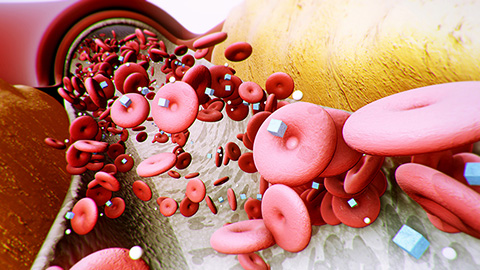
Lipid profiles reveal sex differences in type 2 diabetes
Researchers explored the lipid profiles of individuals with type 2 diabetes and identified potentially useful lipid biomarkers for this condition.
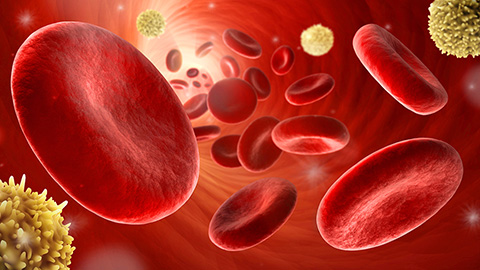
Serum lipids may predict early diabetes risk
Researchers found that levels of two key fatty acids may predict worsening tolerance for glucose, independent of body fat and insulin levels. In turn, these fatty acids may serve as early T2D biomarkers.
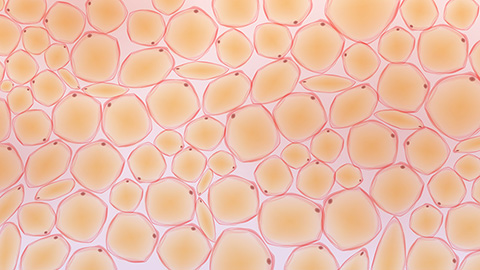
Sex and diet shape fat tissue lipid profiles in obesity
Researchers found that sex hormone levels and diet both influence inflammation and lipid composition in obesity.
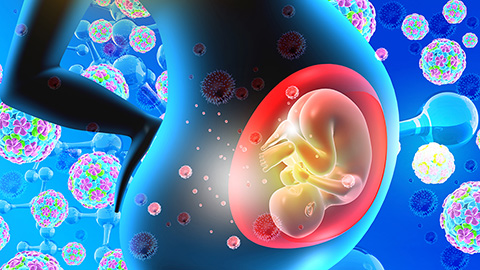
Mapping the placenta’s hormone network
Study uncovers how the placenta actively metabolizes not only glucocorticoids but also novel androgens and progesterones, reshaping our understanding of pregnancy and its complications.

Biochemists and molecular biologists sweep major 2025 honors
Recent Nobel, MacArthur and Kimberly Prize honorees highlight the power of biochemistry and molecular biology to drive discovery, including immune tolerance, vaccine design and metabolic disease, and to advance medicine and improve human health.

